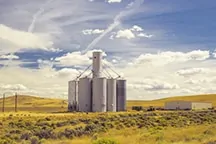

$50 million+ will be made available this year.
With the passage of the BUILD Act this year, there are important changes to the grant applications including special consideration given to communities and projects on any waterfronts or floodplains. There are three categories of opportunities for Brownfield grant funding, as follows:
Multipurpose Grants – each proposal is funded up to $800,000 over five years. EPA anticipates selecting ten proposals.
Assessment Grants – Community-wide and Site-specific proposals are each funded up to $200,000 over three years; Assessment Coalition proposals are funded up to $600,000 over three years. EPA anticipates selecting 114 proposals.
Cleanup Grants each proposal funded up to $500,000 over three years. EPA anticipates selecting 40 proposals. Brownfield sites where EPA Cleanup Grant funds were previously expended may not receive additional EPA Cleanup Grant funding in FY 2019.
EPA is hosting a webinar on December 11, 2018, at 2 pm (ET). The webinar is to assist applicants with understanding the Multipurpose, Assessment, and Cleanup Grant Guidelines. Participants can join the audio conference line at 1-866-299-3188 using access code: 202-566-1817, and the web conference at
SCS Engineers routinely and successfully supports our clients with Brownfield’s grant writing and grant application reviews, in addition to our Brownfields and Remediation Services.
Applications are due by January 31, 2019. Please contact Amy Dzialowski, our Brownfields Grant Specialist or if you have a property or redevelopment district that you think is a good fit for pursuing these funds, or for a conversation regarding this program.
Amy Dzialowski, Project Director, and SCS’s Brownfields Grants National Expert
Brownfields and Voluntary Remediation Experts: Mike McLaughlin, Sr. VP, and Dan Johnson, VP.
We will continue to see changes on the federal, state and local regulatory front that together will help us manage storm water in a smart, cost-effective manner preserving our water resources. Betsy Powers of SCS Engineers provides an update in her most recent article.
Until a new WOTUS definition is finalized, the U.S. EPA and the U.S. Department of the Army have indicated their intent to re-codify the pre-Obama regulations. The revised WOTUS rule is expected to include looser regulatory requirements, meaning fewer waters will qualify, and therefore, fewer permits will be required.
To speed up approvals of permits for highways, bridges, pipelines and other major infrastructure, an Obama-era executive order aimed at reducing exposure to flooding, sea level rise and other consequences of climate change were rolled back reducing the environmental reviews and restrictions on government-funded building projects in flood-prone areas.
Removing phosphorus from storm water runoff is a hot topic, with partners exploring alternative opportunities to reduce the introduction of phosphorus in runoff, remove it or manage it in watersheds.
More proprietary filters are being used for pretreatment before underground infiltration for redevelopment sites for total suspended solids (TSS) control and where land is limited. The performance of proprietary devices continues to be studied and improved to meet regulatory requirements. Increasing general attention is being paid to emerging contaminants that are problematic in storm water runoff. Among the emerging contaminants of concern are pharmaceutical and personal care products, pesticides, hydrocarbons, and hormones. Many of which are now included within the Endocrine Disrupting Chemicals group.

Betsy Powers is a civil and environmental engineer with SCS Engineers.
Of interest to industries concerned with wastewater ammonia treatment or landfill leachate ammonia treatment.
SCS Engineers publishes a new SCS Technical Bulletin entitled “Treatment of Ammonia in Wastewater and Leachate – Considerations and Technologies.”
Reducing the amount of ammonia in landfill leachate and other industrial wastewaters are often necessary to meet discharge standards. Proven wastewater treatment technologies can effectively reduce ammonia concentrations, but selecting the right technology requires careful consideration. This SCS Technical Bulletin provides background on ammonia in wastewater, and reviews factors to consider in selecting a treatment technology. The Bulletin includes a review of eight of the most common and effective treatment and disposal methods for wastewater with elevated ammonia or nitrogen.
Read or share the SCS Technical Bulletin here.
Explore SCS’s Liquids Management resources here.
Thanks to those of you who joined SCS Engineers at the Iowa Recycling & Solid Waste Management Conference during our presentation on Dane County, Wisconsin’s successful construction and demolition (C&D) waste processing facility.
We’ve posted our C&D facility presentation online in a short video format.
For those who missed it, here is a quick recap of what helped make the facility a success. Dane County converted a C&D transfer station located at their landfill property into a fully operational C&D processing facility. A public-private partnership makes C&D recycling a more economically viable endeavor, by leveraging strengths among the public and private entities.
With a pricing structure that creates a strong incentive for LRR to recycle, more C&D is beneficially reused, and the County extends the life of its landfill.
SCS supported the County in this award-winning project by managing the design and construction of the facility. Want to discuss your C&D operations? Contact your SCS Engineers representative today, or visit our website that includes this and other case studies, whitepapers, articles, and events.
Thank you to the Iowa Recycling Association and Iowa Society of Solid Waste Operations for sponsoring another valuable conference. See you next year!
Ann O’Brien helps industrial and agricultural companies stay abreast of the regulatory information necessary to remain compliant with federal and state policies. Ann’s most recent series of articles for businesses in the printing or agricultural industries provides advice on air permits and the need for addressing the limits on visible emissions likely specified in their air permits.
Here’s what you need to know about what visible emissions are, how they’re regulated, and how to stay in compliance with your air permit. For other industries, please feel free to contact any SCS office or email us at service.scsengineers.com. We provide our professional services nationwide.


A federal appeals court ruled that the Obama administration’s rule to regulate coal ash does not go far enough in some areas. However, the court did not give environmentalists everything they were seeking. The U.S. Court of Appeals for the District of Columbia Circuit’s Aug. 21 decision in the case, Utility Solid Waste Activities Group v. EPA gave neither side all it wanted.
The decision comes as the Trump administration seeks to revise the EPA’s 2015 rule intended to regulate coal combustion residuals (CCR) from coal-fired power plants—one of the largest waste streams in the U.S. In July, the EPA issued a final rule granting more flexibility to industry and states. Both the Obama and Trump administrations have sought to give states the ability to create their own standards, but according to the D.C. Circuit, neither set of rules satisfied the Resource Conservation and Recovery Act–a 1976 law that allows the federal government to regulate solid waste generation, storage and disposal.
In its ruling, the court agreed that the EPA erred when it failed to mandate unlined CCR surface impoundments be closed, and when it exempted inactive impoundments from the regulation. The court also ruled that EPA should not have classified clay-lined impoundments as being lined.
The court also ruled against industry groups. For example, it determined that EPA does have the authority to regulate inactive impoundments and that it did provide enough public notice that it intended to apply aquifer-location criteria to existing impoundments.
The court also found that EPA decision to prohibit certain unencapsulated beneficial uses of CCR in amounts 12,400 tons or greater was arbitrary and remanded that decision to the EPA. The Agency had previously acknowledged the error in setting the 12,400 ton threshold (the threshold using the Agency’s methodology should have been about 75,000 tons).
Several industry publications have provided coverage of the decision and reaction from industry leaders, including E&E News, APPA, Utility Dive, Engineering News Record, and Courthouse News Service.
For questions or more information, please contact SCS Engineers’ staff.
We are all trying to wrap our heads around how to implement and document Recognized and Generally Accepted Good Engineering Practices (RAGAGEP). There are so many elements to review when codes and standards are released it is difficult to know where to start.
One place to start is with the industry improvements associated with life safety. International Institute of Ammonia Refrigeration (IIAR) ANSI Standard 2, Safe Design of Closed-Circuit Ammonia Refrigeration Systems, includes specifications for new construction and can be a tool to ensure your engine room is keeping up with industry standards especially when it concerns life safety.
One change from previous versions of the IIAR Standard 2 is the number and location of eyewash/safety showers. IIAR 2 (2014) is now more in line with OSHA expectations. Keep reading…more from Lee Pyle.
A few years ago, an engineer working for a“friend’s plant” chose to replace their evaporative condenser with an adiabatic condenser. On the surface, the choice seemed like a good idea since adiabatic condensers often provide higher heat rejection with lower water and electricity usage. The condenser was purchased and installed, but all was not well. When not carefully considered, replacing equipment or control programs can have unforeseen consequences such as negative impacts on operational safety.
In this real life example the author examines what information would have made a big difference and significant savings had the right questions been asked.
Click to read this article and others written for those in industries using ammonia refrigeration.
Regulatory policies governing the food industry are in flux giving corporate compliance headaches, but it doesn’t need to keep you up at night with a massive workload. Consultants are an option if you lack the workforce or expertise to conduct PSM/RMP compliance audits.
William Lape, CIRO, reviews the questions to ask of your consultant before hiring. Starting with the amount of experience that the auditor has evaluating programs against the PSM/RMP regulations; review the resumes and auditor’s support structure; training related to the PSM/RMP regulations and how to properly audit; and ask questions, is the auditor familiar with your covered process, or just PSM/RMP in general? Imagine hiring a consultant with the lowest price and discovering s/he has little experience with ammonia refrigeration.
Read this article and others by clicking here.
The Georgia Manufacturing Alliance (GMA), based in Lawrenceville, GA, is a professional organization founded in 2008 to support Georgia’s manufacturing community. SCS Engineers is pleased to announce the firm is GMA’s newest member supporting manufacturers with permitting, compliance, and other environmental services.
Mike Fisher, SCS’s point of contact, has three decades of experience supporting environmental consulting for manufacturers and other industries throughout Florida, North Carolina, South Carolina, Georgia, Alabama, the Bahamas, and South America. Mike has deep well petroleum geology expertise dating nearly four decades.
Learn more about each of our manufacturing solutions areas by clicking on the links below: